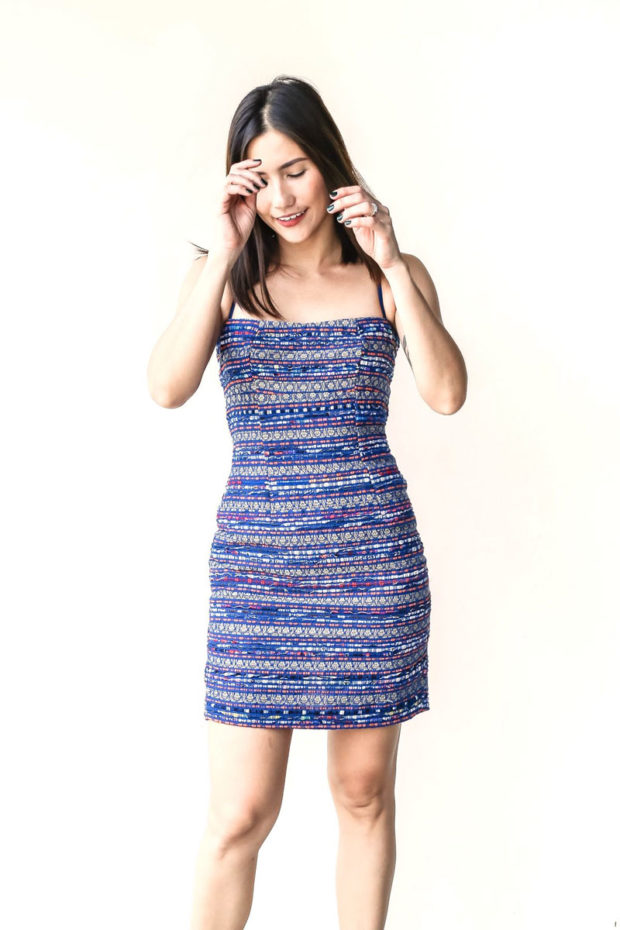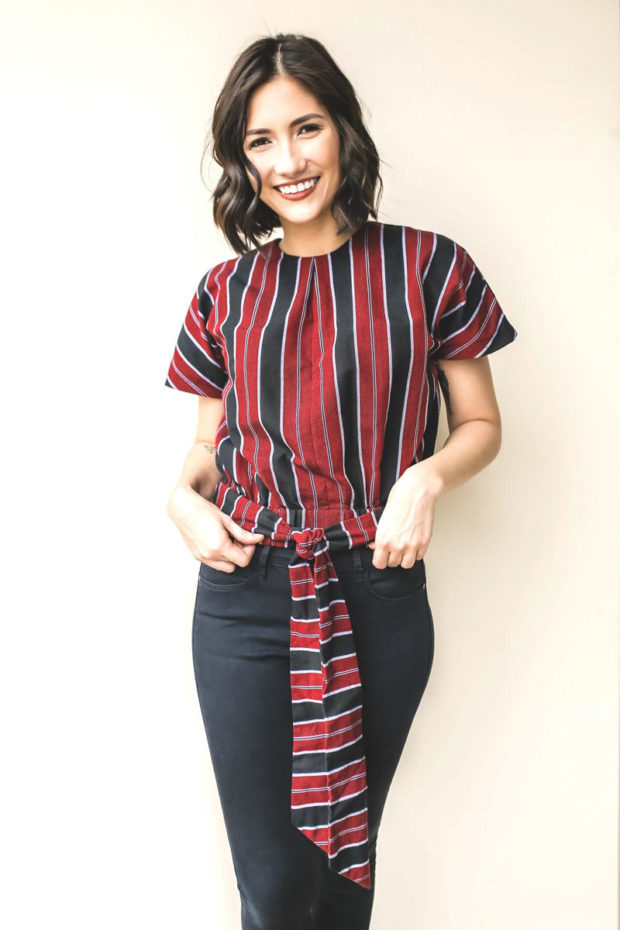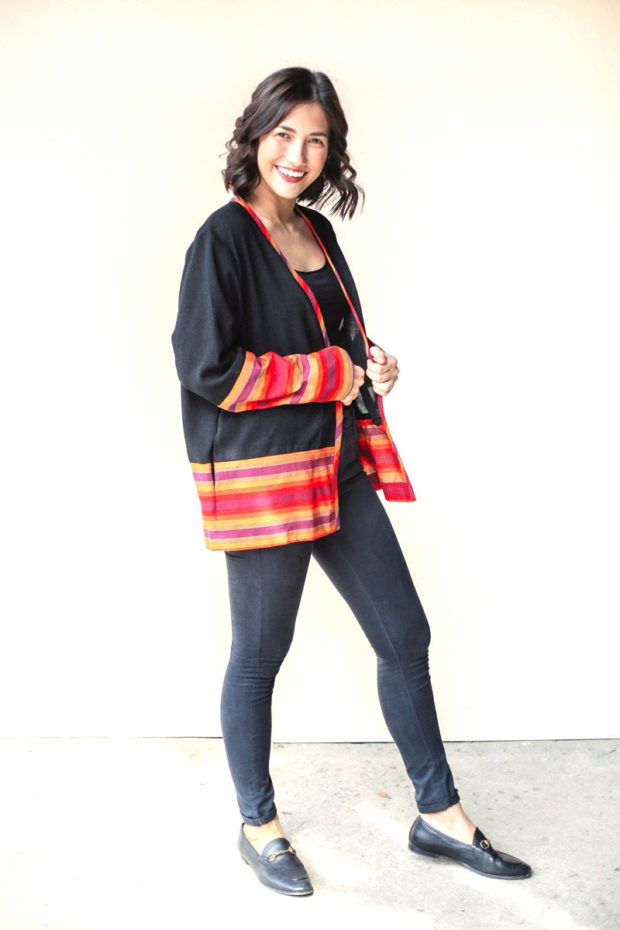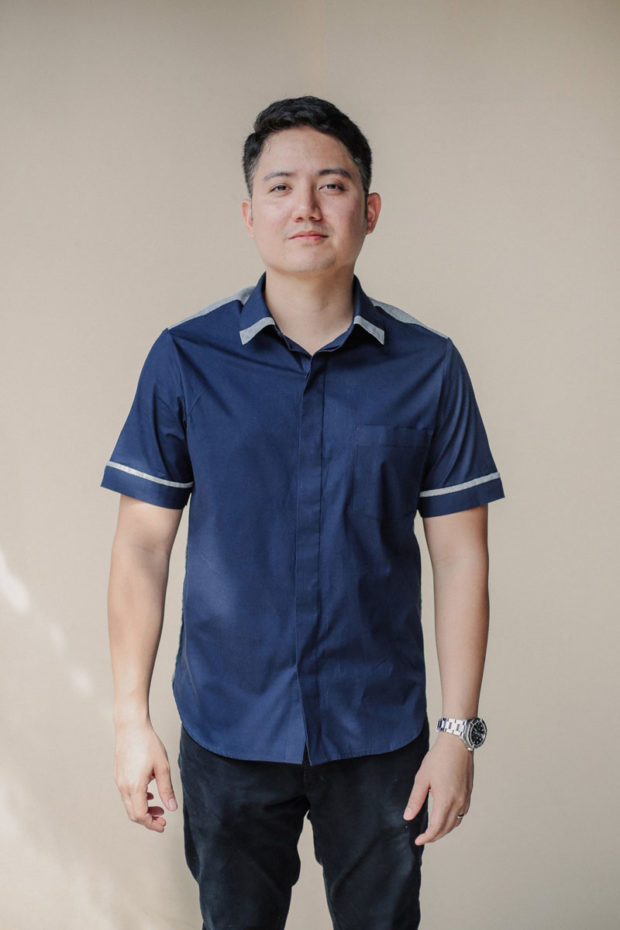Cebu fabric firm’s U.S. pop-ups seek buyers for folk PH weaves

Anthill Fabric Gallery founder Anya Lim. The nonprofit held pop-ups in three U.S. cities to attract buyers to its line of traditional Filipino weaves. TWITTER
LOS ANGELES — When Anya Lim first visited the municipality of Banaue in Northern Luzon at the age of 13, she found her version of Disneyland in a village inhabited by an indigenous tribe called the Igorot.
She remembers seeing the village thriving and feeling excited as she witnessed people weaving fabrics, weaving baskets and carving wood. She had grown up on stories about indigenous tribes from her mom, who did mission work in those areas.
And for Lim, the characters in those stories were her Disney princesses.
“It always fascinated me how they’re the OG Filipinos in some way and how they didn’t have any influences of colonizers,” she said.
Lim returned to Banaue several years later in her early 20s. But this time around, she wasn’t greeted by the vibrant community she saw as a teenager. Instead, she arrived at a complete ghost town.
Her “Disneyland” was gone.
The families that had previously lived in the village had moved out to become tour guides at a time when the popular Banaue Rice Terraces saw an influx of tourists. It provided a source of income they couldn’t obtain by staying in the village.

Endiba dress

Bughaw top
Lim had witnessed the death of a culture during that visit, she said, and it was a trigger point that drove her to establish Anthill Fabric Gallery, a Cebu-based social enterprise that seeks to preserve traditional Philippine weaving.
Founded in 2010, the heart of Anthill – an acronym for Alternative Nest and Trading/Training Hub for Indigenous/Ingenious Little Livelihood seekers – is to elevate Filipino culture and ensure the continuity of traditional Philippine weaving by making it a sustainable livelihood for weavers.
Last October, the company held pop-up events in Los Angeles, San Francisco and New York as part of that goal, to find brands and boutiques that can carry Anthill.
“The value of preserving our traditional weaving is, apart from the fact it’s honoring our ancestors, it also strengthens the family dynamics and value systems amongst these weaving communities in these indigenous groups. It’s preservation of identity, culture and heritage,” she says.
Empowerment through weaving
Prior to founding Anthill, Lim worked in the corporate and non-profit sectors, where she witnessed many young female weavers struggling to maximize their talents and resources. This led them to seek job opportunities – such as factory workers and domestic helpers – away from their homes and families.
She also noted a gap in cultural transmission between the elders and the young, and identity poverty among the youth.
“It’s very cyclical and that really bothered me,” she said. “How they undervalue their own skill, they undervalue their own culture, and they really don’t have the capacity to see beyond weaving as just something that they merely do on the side.”
So, when she decided to start a business, Lim wanted it to be centered on building community entrepreneurship.

Kamatuoran cover up

Narra shirt
“I felt like providing enabling environments for them to have consistent income would give them a higher sense of ownership and really embrace who they are and see their potential,” she says. “We want the business model to be around something that can support women who are still working in the comforts of their own home.”
Over the last nine years, the number of weavers that create clothing for the company has grown from about 15 to 300, Lim says. The majority of them are women who come from across the Philippines, all the way from the Ilocos region in Northern Luzon to South Cotabato in Mindanao.
Normalizing weave wearing
Lim says she spent six months doing research before drafting a business plan for Anthill, during which she came across an article that said Filipino ancestors considered handwoven cloth their “second skin.” It prompted her to reflect on what she wore, and she realized that none of her clothes were made in the Philippines.
“And then it kind of made sense,” she says. “That’s why this industry is dying. Because we don’t wear our clothes. We don’t wear who we are.”
She learned through her research that Filipinos hold various misconceptions of traditional garments that make them unappealing to wear. Some, for instance, believe traditional clothing is only meant to be worn during formal occasions, such as a barong at a wedding.
“Because of the rarity of when we wear it, it doesn’t create demand,” she says. “But if you look at old Filipino photos, you see that it’s something that, actually, our ancestors wore every day.”
Demand for contemporary and informal weave wear appears to have increased over the last decade, according to Lim. She has seen a rise in brands that sell contemporary weave wear, more young women weaving and a spike in membership in the community enterprises the company partners with.
“I think that’s a huge impact indicator that it’s quite changed a lot in terms of how weaves or how our fabrics are perceived,” she notes.
Looking ahead
Anthill will celebrate its first decade next year, and it’s working on establishing a non-profit arm to focus on capacity building so the company can grow. Lim says that most of the company’s profits have been reinvested in its community programs, including one that offers master weavers a financial incentive to train apprentices. But doing so cuts its revenue, making it challenging to balance marketing its products while building capacity to meet demand.
The larger goal is to put Philippine weaves on the global map and get the company’s fabrics into the mainstream, she said.
“We talk about how in food, Filipino cuisine is starting to pick up and become mainstream. We want the fabrics to be the same,” she adds. “We want them to recognize that we have a weaving culture similar to kaiser silk in India or Indonesian batik.”
The company is also planning on launching its textile gallery online, which will enable people to view information about the fabrics and learn about the meaning behind them. (Some, for instance, represent a tribe’s farming life, while others are believed to drive away bad spirits, Lim says.)
As Anthill prepares to supply a rising demand for contemporary weave wear over the next several years, Lim remains focused on how the community enterprise serves as a way to ensure the continuity of a living tradition. It’s one that indigenous groups regard as their heirlooms.
“I think it’s important that we receive that with value as a younger generation. It is what makes us who we are. It defines our identity as Filipinos,” she adds. “It’s also important that traditional weaving is celebrated and lived, and it’s not merely something that you see on coffee table books or something that’s hung on a wall in a museum.”

